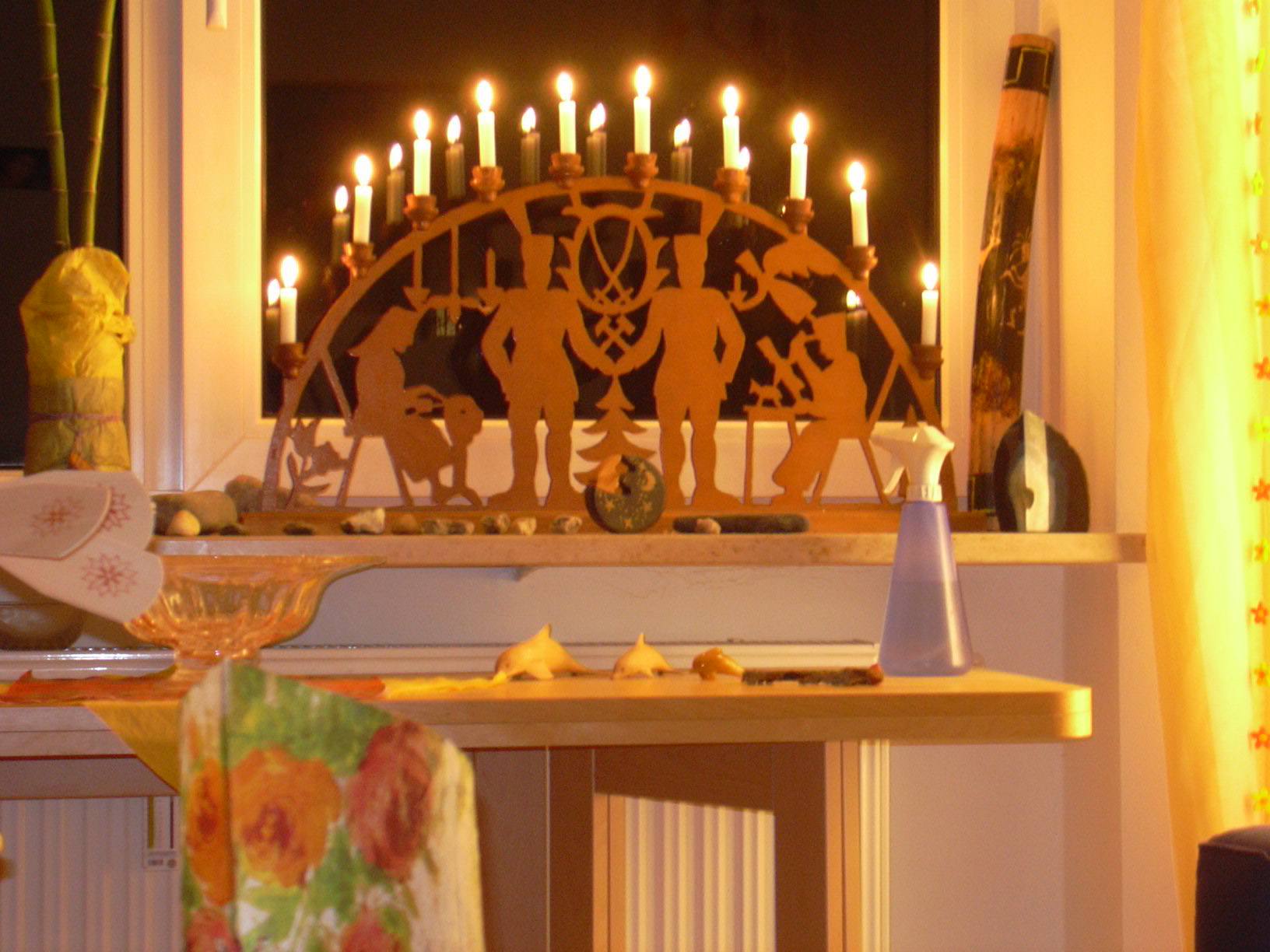Schwibbögen on:
[Wikipedia]
[Google]
[Amazon]

 A ''Schwibbogen'' () is a decorative candle-holder from the
A ''Schwibbogen'' () is a decorative candle-holder from the
German website about the ''schwibbogen''''Außenschwibbogen XXL''
{{Authority control Christmas in Germany Christmas decorations Winter traditions Culture of the Ore Mountains

Ore Mountains
The Ore Mountains (, or ; ) lie along the Czech–German border, separating the historical regions of Bohemia in the Czech Republic and Saxony in Germany. The highest peaks are the Klínovec in the Czech Republic (German: ''Keilberg'') at ab ...
region of Saxony
Saxony, officially the Free State of Saxony, is a landlocked state of Germany, bordering the states of Brandenburg, Saxony-Anhalt, Thuringia, and Bavaria, as well as the countries of Poland and the Czech Republic. Its capital is Dresden, and ...
, Germany
Germany, officially the Federal Republic of Germany, is a country in Central Europe. It lies between the Baltic Sea and the North Sea to the north and the Alps to the south. Its sixteen States of Germany, constituent states have a total popu ...
. The first metal ''schwibbogen'' was made in 1740 in Johanngeorgenstadt
Johanngeorgenstadt (, ) is a mining town in Saxony’s Ore Mountains, 17 km south of Aue, and 27 km northwest of Karlovy Vary. It lies in the district of Erzgebirgskreis, on the border with the Czech Republic, is a state-recognized hea ...
. The early candle arches consisted of a single forged piece of black metal which could be painted. The number of candles varies with the size of the arc, the original design holding eleven. In the UK candle arches or candle bridges are marketed, often just consisting of a simple wooden stepped arch with 7 electric candles. These are not strictly ''schwibbögen''.
Background
The name ''Schwibbogen'' () is from theMiddle High German
Middle High German (MHG; or ; , shortened as ''Mhdt.'' or ''Mhd.'') is the term for the form of High German, High German language, German spoken in the High Middle Ages. It is conventionally dated between 1050 and 1350, developing from Old High ...
', "to hover". The development of the ''schwibbogen'' arch is closely related to the mining traditions of the Ore Mountains. It most likely developed as a candle holder made from metal for the Christmas shift (''Mettenschicht''), a common dinner celebrated by miners, the mining foreman ('' Steiger'') and the smith who had been responsible for the mining tools throughout the year. It bears symbols commonly associated with the life and wishes of the miners.
The most famous design was created by Paula Jordan in 1937 for a show in Schwarzenberg. It depicted the three main sources of income of the people in the region in the 18th and 19th century. Thus the ''schwibbogen'' showed apart from some traditional symbols; two miners, a wood carver, a bobbin lace
Bobbin lace is a lace textile made by braiding and twisting lengths of yarn, thread, which are wound on #Bobbins, bobbins to manage them. As the work progresses, the weaving is held in place with pins set in a lace pillow, the placement of the pi ...
maker, a Christmas Tree, two miner's hammers, two crossed swords, and an angel. It holds seven candles. Contrary to popular belief the candle holder was always associated with Christmas. The light symbolizes the longing of the miners who didn't see the daylight in winter for weeks sometimes due to their long working hours below the surface. During the Christmas shift, the lights may also have represented the safety lamp
A safety lamp is any of several types of lamp that provides illumination in places such as coal mines where the air may carry coal dust or a build-up of flammable gases, which may explode if ignited, possibly by an electric spark. Until the d ...
s of all the comrades from the mining team who had completed the year of dangerous work in the mine.
Over time the designs changed. After World War II
World War II or the Second World War (1 September 1939 – 2 September 1945) was a World war, global conflict between two coalitions: the Allies of World War II, Allies and the Axis powers. World War II by country, Nearly all of the wo ...
the ''schwibbogen'' has reached not only a new popularity, but had changed a lot in its looks. Modern designs are typically made out of wood, and depict historical or religious scenes. Other designs include landscapes, skylines and advertisements, retaining some link to Christmas traditions
Especially in the Ore Mountains the windows of the houses in villages and towns feature a lit candle arch—usually with the traditional designs or at least local scenes. The town of Seiffen is particularly noted for its production of ''schwibbogen'' in its craft shops.
See also
* Wooden toymaking in the Ore MountainsReferences
External links
German website about the ''schwibbogen''
{{Authority control Christmas in Germany Christmas decorations Winter traditions Culture of the Ore Mountains